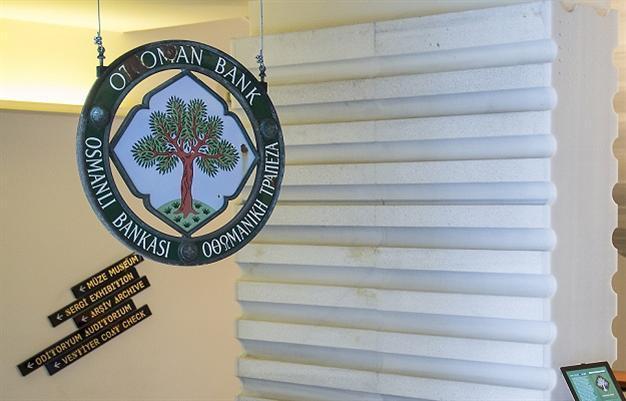Bullet-Riddled Ottoman Bank Sign at SALT Galata
ISTANBUL
 The sign of the Ottoman Bank’s Nicosia branch, which was rescued from the garbage in 1974 and rediscovered 40 years later, is on view at SALT Galata.
The sign of the Ottoman Bank’s Nicosia branch, which was rescued from the garbage in 1974 and rediscovered 40 years later, is on view at SALT Galata.Rediscovered in Nicosia in February 2014 during a photography tour, the sign of the Ottoman Bank was probably made by a local artisan towards the end of the 1940s. The double-sided signs of the city branches in Cyprus were in place until 1963, at which point conflicts between Turks and Greeks affected the bank’s business enough to cause the closure of the Nicosia branch and the opening of a new venue in the southern region of the city.
The discarded sign was rescued from the garbage by an immigrant from Turkey, who rented a shop from the Evkaf on the opposite side of the street in 1974. Stored in the shop on the border of the military zone in Arabahmet quarter until 2014 and bought by Garanti Bank and the Directorate of Northernern Cyprus, the sign will now be on view at SALT Galata from October 2015 for one year.
Olive tree emblem
In 1947, the Ottoman Bank consulted Edmund Dulac, an orientalist designer of banknotes and stamps, to begin working on a distinct, new logo. The olive tree emblem was adopted after various discussions. According to a note written in 1958, the olive tree was chosen for a number of reasons: it is the symbol of productivity, protection, peace, tenacity and adaptability; moreover, it is a plant native to all countries of the bank’s “territory.”
The three roots in the illustration reference the bank’s institutional bases: Istanbul, London and Paris. The branches of the tree represent the branches of the bank as they expanded abroad, and the “window,” an equilateral quadrangle found in endless variations in carpets, miniatures, screens, embroideries, interior and exterior architectural details in Islamic art, indicates Middle Eastern geography.
















